| As 2014 is the centenary of the beginning of the First
World War, I decided to write the following article which
concentrates on the happenings at home, rather than the
carnage abroad. It was a time of shortages and hardship for
many, and sadly, not 'the war to end all wars', as it was
known. Life in the Pre-War Era
For many working class families, life
was hard in the early part of the twentieth century, and
expectations were low. People worked long hours for low
wages, and lived in poor and overcrowded housing. Skilled
men could earn up to thirty shillings a week, and unskilled
men could expect to earn no more than twenty shillings a
week. Trades unions were becoming increasingly militant, and
strikes happened frequently. In 1913 a strike of engineering
workers lasted over two months, in an attempt to raise the
minimum wage for unskilled workers to twenty three shillings
a week. There were also strikes on the railways, and in the
coal mines, not forgetting the great unrest at Wednesbury
when the tube makers downed-tools.
Food was expensive, so much so that
some families spent sixty percent of their income on it, and
malnutrition amongst children became commonplace. Due to the
harder and more stressful living conditions, and the lack of
modern medical care, life expectancy was much shorter than
today, being around fifty years for men, and fifty four
years for women.
The turn of the twentieth century saw
the dawn of the welfare state, but only in a modest way. In
1909 the first old age pensions were paid to people over the
age of 70. They were entitled to five shillings a week. Two
years later the 1911 National Insurance Act was passed to
provide sickness and unemployment benefit for people. The
scheme was compulsory for all wage earners between the ages
of sixteen and seventy. They had to contribute four pence a
week to the scheme, which was supplemented by an additional
three pence from the employer, and two pence from the state.
In return, workers received free medical attention and
medicine, and were paid 10 shillings a week for the first 13
weeks, and 5 shillings a week for the next 13 weeks.
Unemployment benefit consisted of seven shillings a week,
beginning after the first week of unemployment, and lasting
for fifteen weeks in any single year. It was paid at labour
exchanges, which first appeared in 1910.
For many years Britain had been the
dominant economic power in Europe, but by 1914 Britain was
being outperformed by Germany, which had previously been an
important customer for many of our largest industries. As
Germany’s industries flourished, British exports suffered,
and some industries began to decline. |
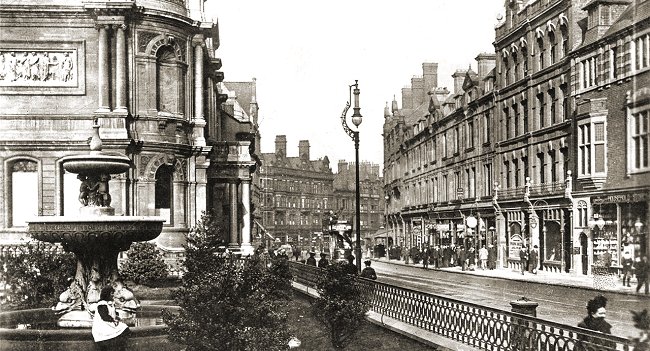
Old Wolverhampton - oblivious to what lay
ahead. From an old postcard.
|
Causes of the War
For some years imperialism had grown in
most of the major European countries, which meant that at
some time, the outbreak war was almost inevitable. It
officially began on 28th July, 1914 with the assassination
of Archduke Franz Ferdinand of Austria, heir to the throne
of Austria-Hungary, and his wife, Sophie, Duchess of
Hohenberg, who were shot dead in Sarajevo, by Gavrilo
Princip, one of a group of six Bosnian Serb assassins. After
the assassination, Austria-Hungary delivered an ultimatum to
the Kingdom of Serbia and prepared to invade. At the time
there were two groups of allies in Europe: The Allied Forces
consisting of France, United Kingdom, and Russia; and The
Central Powers of Germany and Austria-Hungary.
Britain had a treaty with Belgium, and
so declared war with Germany when the German army invaded
Belgium and Luxembourg, on its way to France. Soon all the
major European powers were involved in the war, which within
a few years, also involved many other countries throughout
the world.
When Britain declared war on 4th
August, 1914, celebrations were held throughout the country.
Most people believed it would be a quick and simple affair
that would be over by Christmas. Patriotism was high, and
large numbers of men rushed to join the forces to answer the
call to arms. The government wanted 100,000 volunteers and
began a large recruitment campaign which bombarded the
public with posters. This was so successful that within a
month 750,000 people had volunteered.
Sadly it was not to be a quick affair.
As the German troops entered France, the French and British
troops moved northwards to meet them, and the massive armies
dug-in, starting the terrible trench warfare which would
last for four years.
|
|
Wolverhampton in 1914, that Fateful Year
June 1914 was hot and dry, war seemed
far away. On 25th July an article in the Express & Star
stated that Britain and France were not interested in the
problems in Europe, and were appealing for moderation.
Within a few days the headlines changed, and people began to
realise the seriousness of the situation. On 2nd August the
headlines changed to ‘Germany declares war against Russia’.
It was stated the next day that Britain’s only involvement
would be naval and that troops would not be used, but two
days later, after the declaration of war, the main headline
was ‘England at war’.
All German subjects had to immediately
report to the Chief Constable’s office in the Town Hall, as
can be seen on the poster opposite, and
panic buying began in the shops, leading to many price
rises.
By the second week in August, volunteers were sought to
take part in the war. |
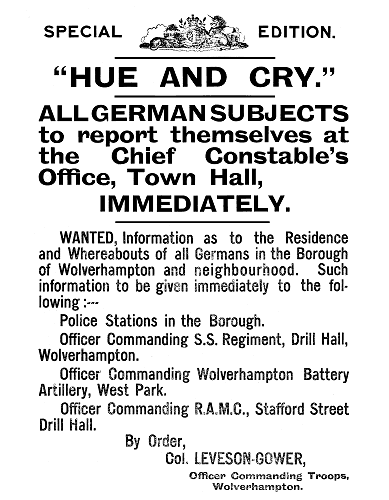 |
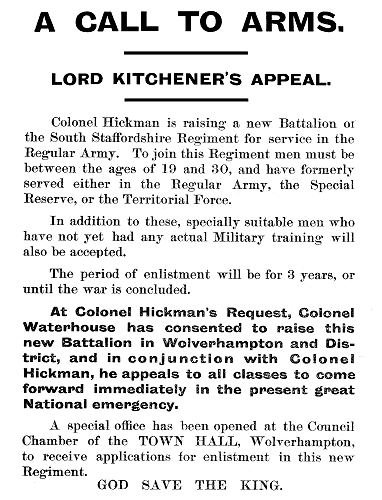 |
As part of
Lord Kitchener’s call to arms, Hon. Colonel T. E. Hickman
(later Brigadier-general)formed a new
battalion of volunteers to go into service with the South
Staffordshire Regiment. Participants had to be male,
between 19 and 30 years of age, and were asked to bring
another possible volunteer with them.
Lord Kitchener’s
appeal using the slogan ‘Your King and Country needs you’
led to many volunteers. One hundred thousand men were needed
immediately, to go to the front for a war that would be over
by Christmas. Even so, they had to enlist for three years,
and for the duration of the war. Men who didn’t enlist were
under a lot of pressure to do so, and those who enlisted had
no idea what they were letting themselves in for.
In August, Parliament Passed the
Defence of the Realm Act which gave the government a range
of new powers to prevent anyone assisting or communicating
with the enemy. The press was censored, to keep-up people’s
morale, and plans were made to ensure that scarce resources
were correctly used.
|
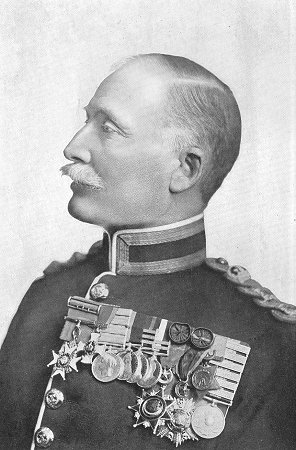
Brigadier-General T. E. Hickman, C.B.,
D.S.O., M.P. |
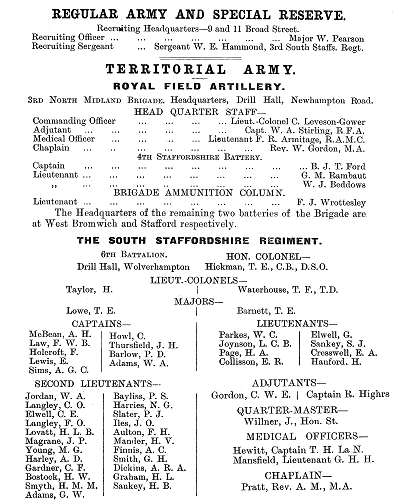 |
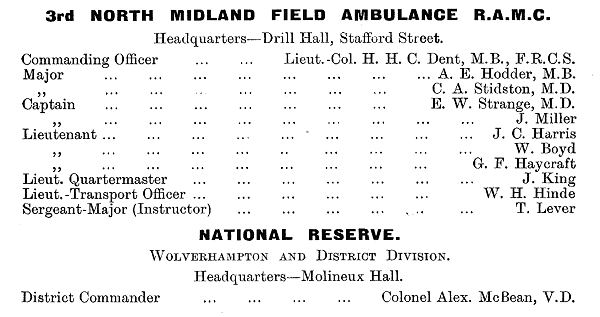
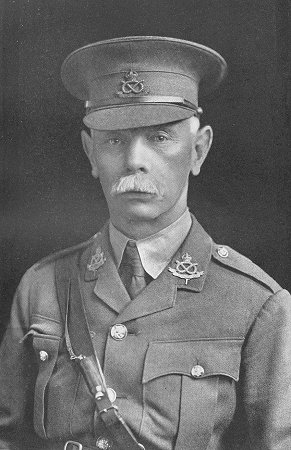
Major T. E. Lowe of the South
Staffordshire Regiment. |
|
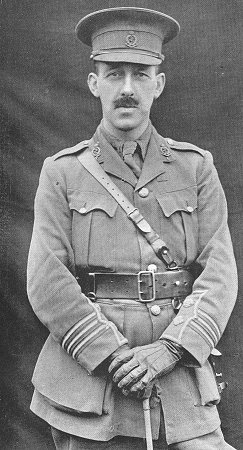
Lieut.-Col. H. H. C. Dent of the 3rd
North Midland Field Ambulance. |
|
The Admiralty and the Army Council were
given powers to take-over any factory or workshop for the
production of arms, ammunition, or products for the
war-effort. Within twelve months the shortage of munitions
led to the government setting-up its own arms factories, and
eventually taking over the vitally important coal industry.
On 5th October a civic farewell was
given at St. Peter’s Church for the 6th Battalion of the
South Staffordshire Regiment as it left for war. During the
next twelve months the battalion would sustain heavy
losses.
Much pressure was put on anyone
considered to be a potential recruit. It was impossible to
escape from the recruitment drive.
|
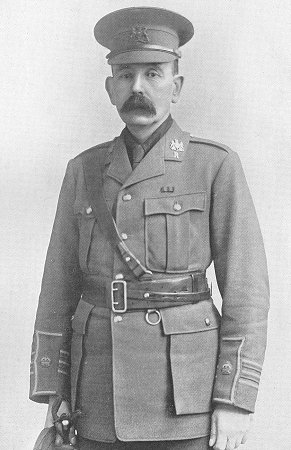
Major W. Pearson, Regular Army and
Special Reserve Recruiting Officer. |
|
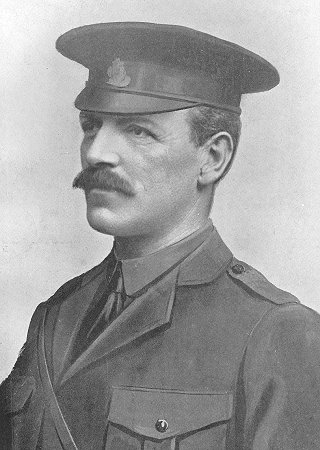
F. Carr, Acting Commandant,
Wolverhampton Rifle Corps. |
| By the end of the year The Wolverhampton and District
Recruiting Committee had been formed, and recruiting techniques were
developed.
The committee, which consisted of teachers,
clergymen, political agents, and members of various
societies, visited every man between the age of 18 and 40 to
explain the necessity of going to war, and to encourage
enlistment.
Lady committee members visited men’s wives while
they were at work to stress that their husbands should
join-up. A man and a woman would then call on the family in
the evening to try and persuade the man to enlist. Talks were given at factories during the lunch
hour, and everything was done to assist the recruitment
drive. Skilled recruits received 9s.11d. per week, unskilled
recruits received 8s.9d. per week, with a separation
allowance for married men of 12s.6d., plus 2s.6d. for each
child.
The committee's duties included assisting local regiments
to obtain recruits, and looking after them until they moved
into barracks, or went to war. |
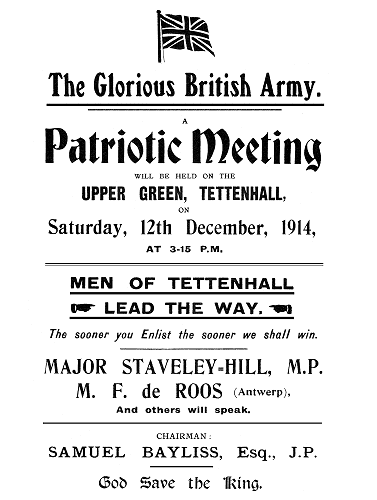 |
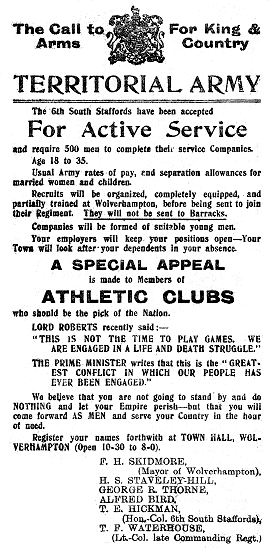
Midland Evening News, 1st September,
1914. |
Anyone involved with any of the local political parties
was asked to assist in canvassing, and the name and address
of every single man between the ages of 18 and 40 was
obtained, along with the details of every married man that
was capable of joining-up.
The committee also recorded the name of every man who had
military experience. When necessary the committee would
house, clothe, equip, look after training, and feed
recruits. Every shopkeeper was invited to display a
recruitment poster in their shop window, which could be
obtained free of charge from the committee. Posters were
also put on lamp posts, which gave the address of the
recruiting office.
Marches of scouts, girl guides and men in khaki uniforms
were organised, and three or four men in khaki uniforms were
stationed in the following streets each evening, to persuade
likely recruits to enlist:
Darlington Street, Victoria Street, Dudley Street,
Lichfield Street, Tettenhall Road, Queen Square, Worcester
Street, Snow Hill, Five Ways, Willenhall market place,
Darlaston market place, Bilston market place, and Brierley
Hill market place.
Open air meetings were held, and cinemas displayed an
army recruitment film. Clergymen were asked to mention the
need for recruits during church services, and prizes were
given to those who brought-in the largest number of
recruits.
Roll of honour cards were displayed on the houses of
those enlisted, some of whom had to wait a short while
before joining the forces. During that time they joined
route marches and assisted in the recruitment campaign. |
|
The recruiting drive continued apace.
Between December 1914 and the end of January 1915 there were
1,500 local volunteers, but still more were needed.
The
names of volunteers were displayed in local newspapers to
add even more pressure to potential recruits. In February
there was a mass recruiting meeting, and a torchlight
procession, and in May a special recruiting week.
Although
around 12,000 locals had been recruited, it was still not
enough. The futility of the stand-off between the vast
armies meant that large numbers of people were killed or
wounded, and enormous numbers of men were needed at the
front.
In the autumn of 1915 Lord Derby headed a campaign
which resulted in around 300,000 new recruits, but it was
still not enough to meet the needs of the army. In January
1916 the prime minister, Herbert Asquith, introduced
conscription for all single men aged between eighteen and
forty, which was seen as the only way to get all of the
troops that were needed. |
|
By 1915 people began to realise that
some skilled men were still needed at home. All the local
factories worked flat-out producing vital war work and
armaments for the armed forces, but initially suffered
because of the shortage of skilled men. The factories could
not operate without them and so applications were invited
for the reservation of skilled men. For the first time,
women were allowed to work in some of the more physically
demanding factory jobs which had previously been considered
to be only suitable for men. Women also kept many of the
essential services in operation including trams, the
railways, and our farms. They also worked in munitions
factories.
The vast range of Wolverhampton-made products for
military use included the following: The Sunbeam Motor Car
Company Limited produced military staff cars, ambulances,
aircraft, and aero engines. Clyno produced machine gun
carriers, ammunition carriers, and aero engines. A.J.S.
built military motorcycles, machine gun carriers, ammunition
carriers and light ambulances. Guy Motors built 30 cwt.
military lorries, aero engines, tank engines, and depth
charge firing mechanisms. Star produced aero engines,
ambulances, vehicles for use as Marconi portable wireless
stations, 50 cwt military lorries, aircraft wings, and parts
for mines. Villiers produced ammunition, including shell
fuses. Hobsons made carburettors for aero engines.
|
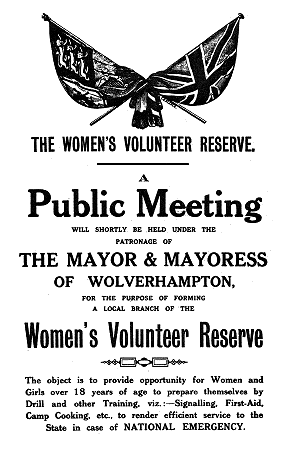 |
|
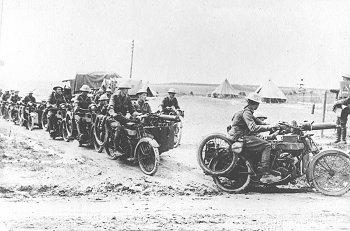
Clyno machine gun carriers at the
front. |
|
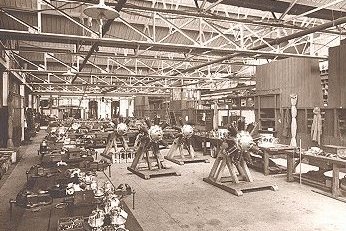
Dragonfly aero engines in production
at Clyno. |
|
In 1915 the Germans declared an
official naval blockade of Britain, and threatened to sink
any ships sailing into British ports. The Americans
immediately objected because many of their cargo ships
sailed here, and the blockade was cancelled. Two years later
it was reinstated, which caused the Americans to enter the
war.
The blockade by the German U-boats led
to food shortages, rising prices, and long queues at the
shops. Both sugar and wheat were in short supply. Due to the
shortage of wheat, the Ministry of Supply recommended that
20lb. of potatoes should be added to every 280lb. sack of
flour.
Zeppelin Raids
In 1916 there were Zeppelin Raids over
parts of the Black Country including Tipton, Bradley,
Wednesbury, and Walsall.
|
|
From the Express & Star, Wednesday 2nd
February, 1916:
AIR RAID DEATH ROLL
54 KILLED AND 67 INJURED BY ZEPPELIN
BOMBS
LARGEST AREA YET COVERED BY ENEMY
ATTACKS
Press Bureau, 6 p.m. Tuesday night.
The War Office issues the following publication:
The air raid of last night was
attempted on an extensive scale, but it appears that the
raiders were hampered by thick mist. After crossing the
coast the Zeppelins steered various courses, and dropped
bombs at several towns, and in rural districts, in:
Derbyshire, Leicestershire,
Lincolnshire, Staffordshire.
Some damage to property was caused. No
accurate reports were received until a very late hour. The
casualties notified up to the time of issuing this statement
amount to:
Killed --------------------- 54
Injured -------------------- 67
Further reports of Monday night’s air
raid show that the enemy’s air attack covered a larger area
than on any previous occasion. Bombs were dropped in:
Derbyshire, Leicestershire,
Lincolnshire, Norfolk, Suffolk, Staffordshire.
The number of bombs being estimated at
220. Except in one part of Staffordshire the material damage
was not considerable, and in no case was any military damage
caused.
No further casualties have been
reported, and the figures remain as 54 killed, 67 injured.
|
|
| At Tipton, during the frosty and foggy
night of 31st January, around eight o’clock in the evening,
three bombs were dropped on Waterloo Street and Union
Street, where two houses were destroyed and a gas main set
alight. Fourteen people were killed, five men, five women,
and four children. The airship then flew over Bloomfield
Road and Barnfield Road, dropping three incendiary bombs on
the way. |
|
At Bradley bombs were dropped over the
canal where a young courting couple had gone for a stroll.
One of the bombs exploded close to them, killing William
Fellows outright. His partner Maud Fellows (not related to
William) was mortally wounded and died just over a week
later at the Wolverhampton and Staffordshire General
Hospital. Maud, who was 24 years old worked in a Bilston
butcher’s shop and lived at 45 Daisy Street, Bradley.
William, aged 23, worked as a stoker and lived in Castle
Street, Coseley.
In Wednesbury bombs were dropped around
King Street and on Russell’s Crown Tube Works that stood
between the High Bullen and King Street, setting
the huge factory alight. Its burnt-out shell remained until the
1960s. In King Street one of the houses was completely
destroyed, killing the four occupants, who were Joseph Smith
and his three children. Joseph’s wife survived because she
left the house to investigate the cause of a loud noise,
which had been the bombs falling on the factory. Luckily the
explosions had fractured a gas main, cutting off the street
lights, which plunged the town centre into darkness.
In Walsall a bomb fell on Wednesbury
Road Congregational Church, badly damaging the main part of
the building. Unfortunately a passer-by, Mr. Thomas
Merrylees was instantly killed by a piece of flying masonry.
A short time later an incendiary bomb fell on the grounds of
the General Hospital and was quickly extinguished by a
passing policeman. |
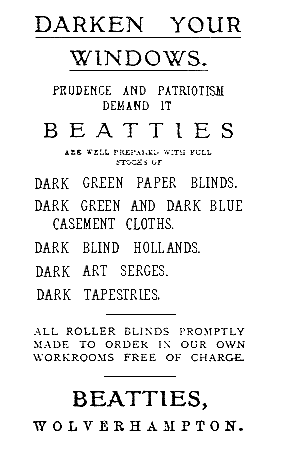
Early in February 1916 Beatties
advertised blackout materials. |
|
Several other bombs were dropped
including one that fell on Bradford Place, killing two
people, and injuring several others, including Walsall’s
Lady Mayoress, 55 years old Mary Julia Slater, who died from
her injuries, three weeks later in the local hospital.
The Later War Years
On 1st July, 1916 the 4th Battalion of
the Staffordshire Volunteer Regiment was formed. |
| In February 1918, the continuing
shortages led to the introduction of food rationing. The
weekly ration for each person included 15 oz of meat, 5 oz
of bacon, and 4 oz of butter or margarine. |
Even horses were rationed. Horse owners had to keep a
record of the horses in their possession, the quantity of
food fed to each of them, and a description of all food
purchased. The maximum daily ration of oats was as follows:
| |
|
|
|
Class of horse |
Hard Working |
Light work or
Non-working |
|
Heavy dray, cart horses, and trotting vanners |
16 lbs. |
12 lbs |
|
Light draught horses and light trotting vanners |
14 lbs. |
10 lbs. |
|
Other light horses and cobs |
11 lbs. |
8 lbs. |
|
Ponies of 14 hands and under |
7 lbs. |
5 lbs. |
Because industry concentrated on war work, there were
many shortages of all kinds of items in the shops, so 'make
do and mend' was the order of the day. |
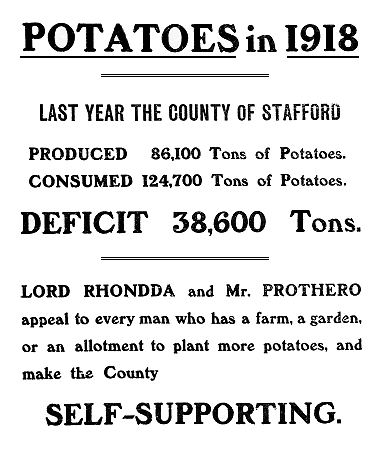 |
|
In 1918 six battle-scarred tanks were
brought over from France to spend a week in many towns or
cities to raise money for the war effort. In Wolverhampton,
Tank number 119 "Old Bill" paraded through the town to the
Town Hall on 4th to 9th February. £1,425,578 of War Savings
was raised. From 28th October to 2nd November in Gun Week,
six howitzers were put on display, and £920,000 was raised
towards the war effort.
In 1918 after a German offensive along
the western front, the Allies and the American forces
successfully drove them back, leading to the armistice on
11th November, 1918, and victory for the Allies. Church
bells rang, factory hooters sounded, flags were flown
everywhere, and large crowds gathered in the streets. The
end of hostilities was celebrated by a thanksgiving service
held in the market patch, and on the steps of St. Peter’s
Church. The peace agreement was formally signed on 28th
June, 1919.
The aftermath
In November, after the war, the Prime
Minister, David Lloyd George, who stayed at the Mount as a
guest of the Mander family, received the Freedom of the
Borough. He gave a speech from the Town Hall balcony and
urged Wulfrunians to 'light the road along which England
shall march to a nobler future'. Whilst in Wolverhampton he
started his election campaign at the Grand Theatre.
Over 1,700 Wolverhampton men did not
return from the war. Their details are recorded in the
town’s roll of honour. Plans were made for the building of a
suitable war memorial to commemorate those who had fallen. A
War Memorial Committee was established in 1919, and after
much deliberation, a contract for the building of the
memorial was given to William Sapcote and Sons Limited, of
Birmingham, in June 1922.
|
|
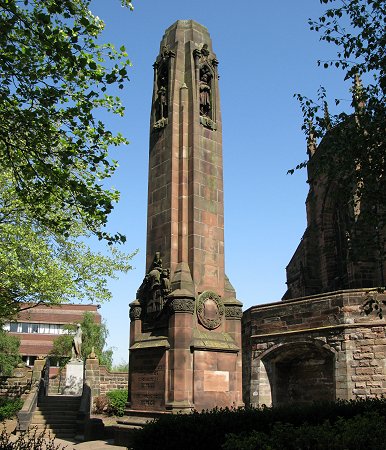
The war memorial. |
The memorial, built at a cost of
£1,888, was sculpted by Mr. W. C. H. King of Hampstead,
London. Red sandstone was used, to match the stone of St.
Peter’s Church. The simple column is decorated with four
statues at the top, one for each of the armed forces, and a
fourth representing St. George, the patron saint of England.
It had been decided that the memorial
would carry no names, just the following simple inscription:
‘In Grateful Memory of Wolverhampton Men Who Served in the
Great War 1914 -1919’.
The memorial was unveiled on Thursday
2nd of November, 1922 by Admiral Sir Frederick Doveton
Sturdee. Also present were members of the council,
representatives of the police, firemen, postmen, and members
of the boys' brigade, scouts, and guides.
|
|
Several other war
memorials were erected around the Borough, including one
built in 1919 in St. Peter’s Gardens to commemorate Douglas
Morris Harris. It features a bust by Robert Jackson Emerson.
The Harris Memorial is dedicated to
Able Seaman Douglas Morris Harris who was born in 1898 at 49
Penn Road. By 1911 the Harris family had moved to 42 Lea
Road.
He initially worked in a bakery before joining the
navy, and being posted to HMS Admirable. He was later on
loan to the Italian navy, and joined the crew of an armed
Italian drifter called ‘Floandi’. The drifters were used to
blockade the port of Cattaro to prevent the Austrian Navy
from using the Adriatic.
|
|

The Harris memorial. |
|
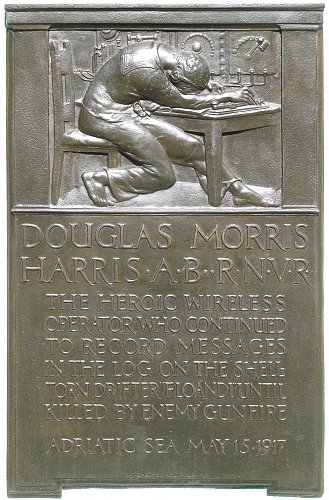
The front plaque. |
|
|
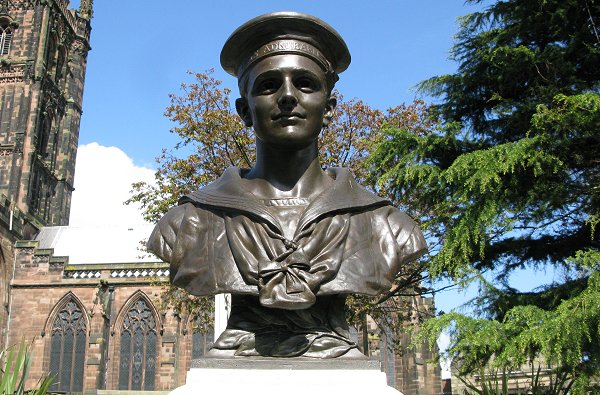
The Emerson bust on the Harris
Memorial. |
|
On the night of 14th to 15th May, 1917,
the drifters came under attack from three Novara Class
Austrian cruisers, SMS Helgsland, SMS Novara, and SMS Saida.
On that fateful night, Douglas Harris, who was the wireless
operator on the ‘Floandi’, remained at his post while his
ship came under heavy fire.
He continued to send messages,
and make entries in his log until he was killed by a piece
of shrapnel. He died on 15th May, 1917 at the age of 19.
Although he was not awarded for his bravery in this country,
he was awarded one of Italy's highest honours. |
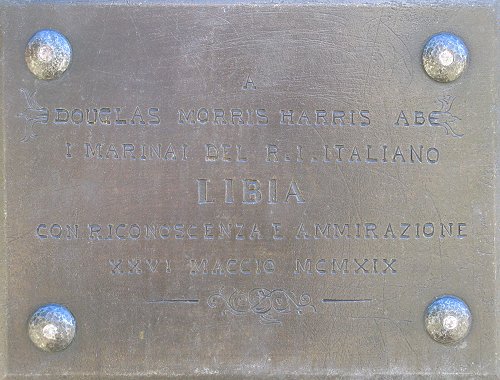
The plaque on the rear of the
memorial. |
|
One of the town’s servicemen, Corporal
Roland Elcock received a Victoria Cross for his
single-handed attack on a German gun position on 13th
October, 1918. Later that day he attacked another enemy
machine-gun and captured the crew. He was 19 at the time. A
civic reception was held in his honour in February 1919, and
he joined other medal winners at the Hippodrome to be
presented with a gold watch.
On the evenings of Tuesday 18th March, 1919
and Wednesday 19th March, 1919 a
dinner followed by entertainment was held by the proprietors of the Express and Star,
N. B. Graham, and J. D. Graham, at the Baths Assembly Rooms,
for the 913 ex-prisoners of war from Wolverhampton and the
Black Country, on their return home. Peace celebrations were
held in Wolverhampton on Peace Day, 19th July, 1919. On 16th
October, Field Marshal Earl Haig visited Wolverhampton to
receive the Freedom of the Borough.
Anti-German feelings were so high that
suggestions were made by the council, to remove the Prince
Consort's statue from Queen Square, to show public
disapproval of his German connections.
The war greatly helped the cause of
women’s emancipation and gave them a greater degree of
independence than before. Although many women lost their
jobs when the hostilities ended, and the men returned, they
now had a more prominent role in society and increased
expectations for the future. The Representation of the
People Act 1918 gave women over 30 years old the right to
vote, but they had to be a member, or married to a member of
the Local Government Register, or a graduate, voting in a
University constituency. They had to wait another ten years
until the passing of the Representation of the People (Equal
Franchise) Act 1928 to gain the same voting rights as men.
The Economy
Immediately after the end of the First
World War, there was a short-lived boom in the economy,
which lasted until late in 1919, but things rapidly went
downhill.
The early 1920s were a time of recession, a time of hardship
for many people. The First World War greatly stretched the
nation’s finances. It disrupted our trade, and led to the
rise of foreign competition, and the loss of many of our
traditional exports, including steel, coal, and textiles.
The country had previously grown wealthy because of its
pre-eminent trading position in the world, the loss of
which, led to the decline of many of our once great
industries, and substantial job losses.
The war had been funded by selling foreign assets, and
borrowing large sums of money, which led to a large national
debt. Britain’s interest payments amounted to around forty
percent of the national budget. In 1920 the rate of
inflation was twice as high as in 1914, and the value of the
pound fell. It would take many years, and the threat of
another world war for the situation to improve.
|
 |
Return to
the
previous page |
|